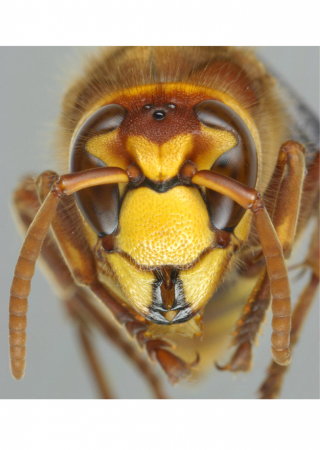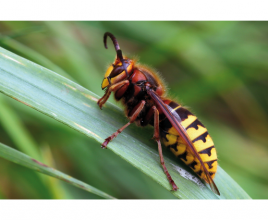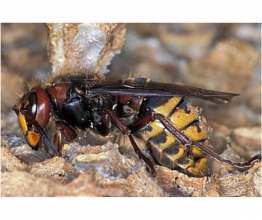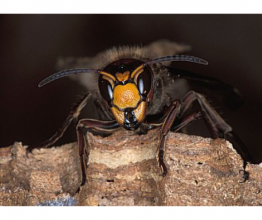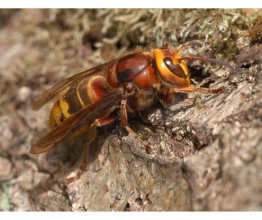European hornet
Vespa crabro
Did you know that… ?
- ...hornets can spray their poison up to a distance of one-half meter?
- ...the stinger of hornets and similar insects is actually a metamorphosed ovipositor - the egg-laying apparatus of a female?
- ...hornets are social insects, and each colony of hornets lives only one year?
- ...hornets build large, multi-story nests from a paper-like substance, which can house many thousands of individuals?
- ...stings from multiple hornets are often into the same place, since odors from a previous sting help direct subsequent ones?
- ...the hornet family (Vespidae) includes not only hornets, but also wasps, and has around 1000 species worldwide?
Practical info
Basic information:
Phylum - Arthropoda
Class - Insecta
Maximum length - 3.5 cm
Eats - ripe fruit, nectar, insects
Habitat - Europe, Asia and South America
Type of poison - low molecular weight substances and enzymes
Distinguishing marks:
Large species of wasp with reddish-brown thorax and front part of abdomen. Abdomen has distinct black striping on a yellow background. Thorax carries three pairs of legs and two pairs of wings. Two large faceted eyes on head.
Characteristics and poison
Hornets are hymenopteran insects, classed with social wasps. They live in Europe, Asia and South America. In Europe, they live in forests, but also near human settlements. A hornet sting is quite painful and causes rapid swelling. The poison contains primarily acetylcholine and histamine, which are responsible for the pain of the sting, but for a normal, healthy adult, the sting does not pose any danger. The hornet's sting is even less dangerous than that of a honeybee. Although a hornet's sting also has barbs, it is not usually torn off after a sting, so a hornet can sting repeatedly.


